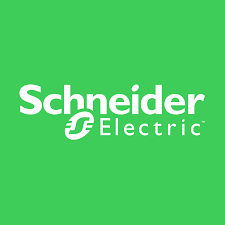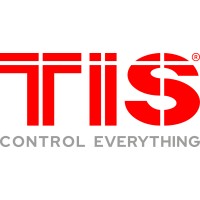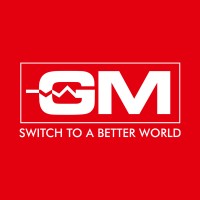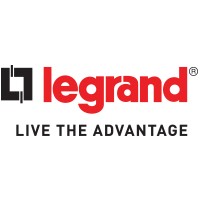Feed aggregator
I made an led earring for my gf!
 | STM32F103, CR2032, 15 leds, 3 resistors, and one day of work resulted in this. [link] [comments] |
a little spider I made for my project <3
 | digital pot [link] [comments] |
Ground-fault interruption protection—without a ground?
A friend who was buying an older house was concerned about electrical safety and asked for my opinion as an electrical engineer. All of the AC receptacles (also called outlets) in the house were the two-wire non-grounded type with only a hot (black) and a neutral (white) wire; there were no three-wire receptacles with separate Earth ground (green) as mandated by the National Electrical Code (NEC) in the US since the 1960s, Figure 1. (Other countries have similar requirements, but we’ll stick with the US NEC for this discussion.)
 Figure 1 For many decades, home AC-line wiring used a basic two-wire receptacle with hot and neutral wires, but the code was upgraded in the 1960s to mandate a three-wire receptacle with a separate ground wire. Source: NCW Home Inspections
Figure 1 For many decades, home AC-line wiring used a basic two-wire receptacle with hot and neutral wires, but the code was upgraded in the 1960s to mandate a three-wire receptacle with a separate ground wire. Source: NCW Home Inspections
An electrician had told him there were two safety-improvement options: 1) rewire some, or all, of the receptacles to have a true ground, a costly and messy undertaking; or 2) install receptacles with built-in Ground Fault Circuit Interruption (GFCI) functions costing about $20 each at outlets of concern. which is not messy, could be done by anyone with a screwdriver and basic ability, and no electrician needed.
My friend’s questions were these: was using a GFCI on a receptacle without a true ground just a cosmetic, feel-good thing? Did it provide any protection? Full protection? Was it code approved? Most important, would it prevent user shock in case of a fault in the wiring or the load?
My answer was simple: I didn’t know. I assumed you needed a ground for proper GFCI wiring, but the electrical code is complicated with many subtleties.
If you only learned about electricity as part of “Electronics 101” but not from the perspective of the power-electrical code and safety, you’re in for many surprises. There are often requirements that don’t make sense at first, and you are likely to have misconceptions as well. The NEC is very good at what it does and defines, and it characterizes a world which is far different than simply using a qualified AC/DC supply to power your lower-voltage circuits.
I did some research and found that, contrary to my intuition, a GFCI without a formal third-wire ground does provide some protection against some types of faults, but not all. Incidentally, we are talking about a real Earth ground here, not the circuit “common” which is often referred to as “ground” even though it has nothing to do with the Earth ground—a misnomer that is not only widely used but easily leads to sloppy and sometimes dangerous assumptions. Most electronic-circuit “grounds” are not grounds at all, end of story.
A little background: The consumer GFCI was developed in the 1960s; there were earlier designs, but they were subject to false tripping and had higher tripping thresholds. Use of GFCIs was mandated by the NEC since 1968, when it first allowed for GFCIs as a method of protection for underwater swimming pool lights. Throughout the 1970s, GFCI installation requirements were gradually added for 120-volt receptacles in areas prone to possible water contact, including bathrooms, garages, and any receptacles located outdoors. The 1980s saw additional requirements implemented. During this period, kitchens and basements were added as areas that were required to have GFCIs, as well as boat houses, commercial garages, and indoor pools and spas. New requirements during the ’90s included crawl spaces, wet bars and rooftops.
How it works: The operating principle of the GFCI is clear, although implementation has subtleties, of course. The GFCI function is usually built into the AC receptacle and is connected across the three AC-line wires, Figure 2; it is “invisible” to the person doing the installation. Portable and external versions are also available and authorized by the NEC for some situations, but the principle is the same.

Figure 2 Wiring of a GFCI receptacle is the same as for a non-GFCI unit, as the GFCI function is embedded and invisible to the user. Source: PDH Online
In normal operation, current flows between the hot and neutral wires with the load in between the two, and there is no current flow through the ground wire. When there is a fault such as current leaking from one of the active conductor through the load (appliance, tool, hair dryer) and possibly through a user and then to ground—a potential shock situation—the current instead goes directly to ground, as that is the path with far lower impedance than through a person. The safety and shock risk from current flow is reduced to non-dangerous levels.
If there is no ground connection, or the ground wire is defective (thus, a “ground fault”), the user is at risk. The reason is that the fault current no longer has a low-impedance path to ground, and instead goes through the user, Figure 3. At the same time, the current flowing through the hot conductor is not the same as the current returning through the neutral conductor.

Figure 3 If a direct, low-impedance path to ground is absent, fault currents may instead flow through the user to ground, establishing a shock risk. Source: Pressbooks/Douglas College, Canada
This is where the GFCI comes into action: it detects this hot/neutral current imbalance and disconnects the hot and neutral lines from the load. When it senses that imbalance of current, a sensor coil within the GFCI generates a small current that is detected by a sensor circuit. If the sensed current is above a preset threshold, the sensor circuit releases a solenoid, and the current-carrying contacts open (“trip”).
How much imbalance is tolerated? The NEC dictates that residential GFCIs designed to protect people (rather than electrical infrastructure) interrupt the circuit within 25 milliseconds if the leakage current exceeds a range of 4 to 6 milliamps. (The GFCI manufacturer chooses the exact setting.) For equipment-only receptacles, the limit is higher at around 30 milliamps.
Note that GFCIs can’t protect against faults which do not involve an external leakage current, as when current passes directly from one side of the circuit through a victim to the neutral wire. They don’t protect against overloads or short circuits between the hot conductor and neutral.
What about non-grounded GFCIs?: The NEC is an evolving document that is updated every few years to allow new technologies and configurations while disallowing others. GFCI’s provide protection whether or not the house wiring is grounded—that’s why they are called “ground fault” devices and not “shock-protection” ones.
Over the years the NEC has mandated use of grounded GFCIs in new installations, but also formally allowed for retrofit installation without a third-wire ground. In such cases, the three-wire GFCI receptacle or its cover place must be marked “no equipment ground.”
A GFCI will help to protect against electric shock where current flows through a person from a hot or neutral phase to Earth, but it cannot protect against electric shock where current flows through a person from phase to neutral or phase to phase. For example, if someone touches both live and neutral wires the GFCI cannot differentiate between current flows through an intended load versus flows through a person.
When you think about it, not having a third-wire ground at all is the ultimate ground fault. A GFCI does not require an equipment-grounding conductor (green wire) since the GFCI detects an imbalance between the “hot” (black) conductor and the “neutral” (white) conductor.
In short: using a GFCI on a non-grounded receptacle does, indeed, provide some level of protection, even though there is no “ground in which a fault can develop”. The GFCI doesn’t magically produce a ground; it just interrupts power when abnormal current flow is detected. Your electronic devices won’t be protected if there’s a ground fault, for example, and a standard plug-in tester won’t work on the non-grounded GFCI outlet (that can be confusing). Still, an ungrounded GFCI outlet will still shut off in the event of a current-flow fault, so it can help keep users safe.
The answer to the question of using a GFCI in a non-grounded receptacle rather than adding a ground wire is easy: do it. The GFCI provides some protection when the ground wire is faulty, and the absence of a ground wire is certainly a clear fault. It provides some level of protection again user shock under the most common wiring and load failure modes.
Dealing with power-line wiring, faults, regulations, and codes is not trivial, but the rules are based on basic and solid electrical principles. It’s easy to think you understand more about it than you actually do, when you don’t grasp the reasoning behind many of the mandates of the code. While ignorance may be bliss, here it can be dangerous, especially when based on overconfidence or misconceptions.
Bill Schweber is an EE who has written three textbooks, hundreds of technical articles, opinion columns, and product features.
Related Content
- (Under)standing Your Ground
- AC grounding: essential, dangerous, or both?
- AC Grounds: So Essential, Except When They’re Not
- When Poor Grounding Leads to More Grounding
- Mistakes were made, even in a simple 3-wire AC hookup
References
- Angi, “Does a GFCI Outlet Need to be Grounded?”
- com, “406.4(D)(2) Non-Grounding-Type Receptacles”
- NCW Home Inspections, LLC, “3 Prong Grounding Type Receptacles on 2 Wire Ungrounded System: A little history”
- EE World Online, “Basics of ground fault interrupters”
- PDH Online Course E321, “Ground Fault Circuit Interrupters”
- Douglas College/BC/Canada, “7 Electrical Safety: Systems and Devices”
- CPSC Fact Sheet, “What is a GFCI?”
- Harvard University Campus Services, “Ground Fault Circuit Interrupters (GFCI)”
- International Association of Certified Home Inspectors, “Ground-Fault Circuit Interrupters (GFCIs)”
- The Holmes Group/Make it Right, “Ground Fault Circuit Interrupters (GFCIs)”
- This Old House, “GFCI Receptacles” (video)
- Independent Alliance of the Electrical Industry (IAEI), “GFCI and AFCI Basics”
The post Ground-fault interruption protection—without a ground? appeared first on EDN.
Top 10 Smart Switch Manufacturers in India
India’s smart switch market is experiencing significant growth as smart home adoption continues to rise. Consumers are increasingly looking for automation solutions that offer convenience, energy efficiency, and security. Smart switches play a crucial role in home automation, allowing users to control lighting and appliances remotely through apps or voice commands.
Here’s a look at the top 10 smart switch manufacturers in India for 2025, based on their technological advancements, market presence, and innovative solutions.
1. Legrand IndiaLegrand is a global leader in electrical and digital building infrastructure. In India, it has established itself as a premium provider of smart home solutions, including high-quality smart switches. Legrand’s smart switches are designed with advanced automation features, seamless Wi-Fi connectivity, and energy-saving capabilities. Their range includes smart touch switches, motion-sensor switches, and dimmers, all of which integrate with leading voice assistants like Alexa and Google Assistant.
2. Schneider Electric Schneider Electric is another powerhouse in energy management and automation. The company offers a comprehensive range of smart home solutions, including smart switches with IoT connectivity. Schneider’s Wiser Smart Home platform enables users to control their home environment effortlessly through a smartphone app. Their smart switches come equipped with real-time energy monitoring, remote access, and scheduling features, making them an ideal choice for sustainable and tech-savvy homes.
Schneider Electric is another powerhouse in energy management and automation. The company offers a comprehensive range of smart home solutions, including smart switches with IoT connectivity. Schneider’s Wiser Smart Home platform enables users to control their home environment effortlessly through a smartphone app. Their smart switches come equipped with real-time energy monitoring, remote access, and scheduling features, making them an ideal choice for sustainable and tech-savvy homes.
 Wipro has expanded its presence in the smart home segment with innovative and user-friendly solutions. The Wipro Smart Switch series offers a blend of affordability and advanced technology. Their products are compatible with both Wi-Fi and Zigbee protocols, ensuring smooth integration into existing smart home ecosystems. Wipro’s smart switches provide touch controls, app-based automation, and voice control compatibility, making home automation accessible to a broad audience.
Wipro has expanded its presence in the smart home segment with innovative and user-friendly solutions. The Wipro Smart Switch series offers a blend of affordability and advanced technology. Their products are compatible with both Wi-Fi and Zigbee protocols, ensuring smooth integration into existing smart home ecosystems. Wipro’s smart switches provide touch controls, app-based automation, and voice control compatibility, making home automation accessible to a broad audience.
 Crabtree, a premium brand under Havells, is known for its aesthetically appealing and functionally advanced smart switches. The Crabtree Amare series features capacitive touch switches that allow smooth operation with minimal effort. These switches support multiple automation protocols and provide customizable scenes for different lighting moods. Their modular designs make them a preferred choice for modern homes and office spaces.
Crabtree, a premium brand under Havells, is known for its aesthetically appealing and functionally advanced smart switches. The Crabtree Amare series features capacitive touch switches that allow smooth operation with minimal effort. These switches support multiple automation protocols and provide customizable scenes for different lighting moods. Their modular designs make them a preferred choice for modern homes and office spaces.
 TIS Control specializes in high-end smart automation solutions designed for luxury homes and commercial spaces. Their smart switches integrate with lighting, HVAC, security systems, and multimedia devices, providing a holistic smart home experience. TIS switches utilize Zigbee and KNX communication protocols, ensuring high reliability and scalability. The company also focuses on energy-efficient solutions, helping users reduce electricity consumption while enhancing convenience.
TIS Control specializes in high-end smart automation solutions designed for luxury homes and commercial spaces. Their smart switches integrate with lighting, HVAC, security systems, and multimedia devices, providing a holistic smart home experience. TIS switches utilize Zigbee and KNX communication protocols, ensuring high reliability and scalability. The company also focuses on energy-efficient solutions, helping users reduce electricity consumption while enhancing convenience.
 Oakter is an Indian startup that has gained prominence in the affordable home automation segment. Their smart switches come with Wi-Fi and RF connectivity, making them suitable for both modern and traditional homes. Oakter offers retrofit smart switches, allowing users to upgrade their existing switchboards without extensive wiring changes. Their ecosystem supports AI-based automation, enabling smart scheduling and predictive energy management.
Oakter is an Indian startup that has gained prominence in the affordable home automation segment. Their smart switches come with Wi-Fi and RF connectivity, making them suitable for both modern and traditional homes. Oakter offers retrofit smart switches, allowing users to upgrade their existing switchboards without extensive wiring changes. Their ecosystem supports AI-based automation, enabling smart scheduling and predictive energy management.
Cubical Labs is a technology-driven Indian company focused on intelligent home automation. Their smart switches are equipped with AI-driven controls, real-time power monitoring, and remote accessibility. The company’s proprietary Cubical Smart Hub integrates multiple devices into a single ecosystem, allowing users to control lighting, fans, and appliances seamlessly. Their ultra-low latency response technology ensures quick execution of commands, setting them apart from competitors.
8. GM Modular GM Modular is a well-established player in India’s electrical solutions industry. Their range of smart touch switches is known for its sleek designs, capacitive touch functionality, and high durability. GM Modular’s smart switches support Wi-Fi and Bluetooth connectivity, allowing users to control them via smartphones or voice assistants. With a strong focus on customizable aesthetics, GM Modular is a preferred choice for homeowners looking to blend functionality with style.
GM Modular is a well-established player in India’s electrical solutions industry. Their range of smart touch switches is known for its sleek designs, capacitive touch functionality, and high durability. GM Modular’s smart switches support Wi-Fi and Bluetooth connectivity, allowing users to control them via smartphones or voice assistants. With a strong focus on customizable aesthetics, GM Modular is a preferred choice for homeowners looking to blend functionality with style.
 Anchor, a subsidiary of Panasonic, has been a household name in India for decades. The company has entered the smart switch market with its Panasonic Smart Home series, offering a combination of Japanese reliability and Indian adaptability. Their smart switches feature touch-sensitive panels, surge protection, and energy-saving modes. Anchor also provides customized automation solutions for residential and commercial spaces, making them a versatile choice for automation enthusiasts.
Anchor, a subsidiary of Panasonic, has been a household name in India for decades. The company has entered the smart switch market with its Panasonic Smart Home series, offering a combination of Japanese reliability and Indian adaptability. Their smart switches feature touch-sensitive panels, surge protection, and energy-saving modes. Anchor also provides customized automation solutions for residential and commercial spaces, making them a versatile choice for automation enthusiasts.
 Goldmedal has carved a niche in the Indian market with its smart, stylish, and user-friendly switches. Their i-Touch range features glass touch panels, remote-controlled switches, and integrated timers for automated scheduling. Goldmedal’s products are built with fire-resistant materials, ensuring safety alongside smart functionality. Their emphasis on wireless connectivity and long-term durability makes them a popular choice among Indian consumers.
Goldmedal has carved a niche in the Indian market with its smart, stylish, and user-friendly switches. Their i-Touch range features glass touch panels, remote-controlled switches, and integrated timers for automated scheduling. Goldmedal’s products are built with fire-resistant materials, ensuring safety alongside smart functionality. Their emphasis on wireless connectivity and long-term durability makes them a popular choice among Indian consumers.
India’s smart switch industry is poised for rapid growth as the demand for smart homes continues to surge. These top 10 manufacturers are driving the industry forward with their innovative technologies, energy-efficient solutions, and user-friendly designs. Whether it’s luxury home automation or cost-effective smart switch solutions, these brands cater to a wide range of consumer needs, making the dream of a fully connected home a reality in India.
The post Top 10 Smart Switch Manufacturers in India appeared first on ELE Times.
День італійського дизайну в Україні пройде в Київській політехніці!
Про плани проведення заходу під час візиту до нашого університету розповів Карло Колоннелла, директор Італійського інституту культури в Києві при Посольстві Італії в Україні, та Паоло Коя, дизайнер і архітектор, організатор Дня італійського дизайну.
Вітаємо Михайла Захаровича Згуровського із 75-річчям
Сьогодні своє 75-річчя відзначає Згуровський Михайло Захарович — доктор технічних наук, професор, академік НАН України, міністр освіти України (1994–1999 рр.), ректор Київської політехніки з квітня 1992 по липень 2024 року.
Infineon introduces new EiceDRIVER isolated gate driver ICs for traction inverters in electric vehicles
Infineon Technologies AG introduces new isolated gate driver ICs for electric vehicles to enhance its EiceDRIVER family. The devices are designed for the latest IGBT and SiC technologies. Furthermore, they support Infineon’s new HybridPACK Drive G2 Fusion module, the first plug’n’play power module that implements a combination of Infineon’s silicon and silicon carbide (SiC) technologies. The pre-configured third-generation EiceDRIVER products, 1EDI302xAS (IGBT) and 1EDI303xAS (SiC/ Fusion), are AEC-qualified and ISO 26262-compliant, ideal for traction inverters in cost-effective and high-performant xEV platforms.
The devices 1EDI3025AS, 1EDI3026AS and 1EDI3035AS provide a strong output stage of 20 A and drive high-performance inverters of all power classes up to over 300 kW. The variants 1EDI3028AS and 1EDI3038AS with an output stage of 15 A are ideal for use in entry-level battery electric vehicle (BEV) and plug-in hybrid electric vehicle (PHEV) inverters as well as for the excitation circuit of externally excited synchronous machines (EESM). In addition, the devices are equipped with the new tunable soft-off feature, which provides excellent short-circuit performance to support the latest SiC and IGBT technologies.
Various monitoring functions, such as an integrated self-test for desaturation protection (DESAT) and overcurrent protection (OCP), improve the handling of latent system errors while the new primary and secondary safe-state interface enables versatile system safety concepts. In addition, a continuously sampling 12-bit delta-sigma ADC with integrated current source can read the voltage directly from temperature measurement diodes or an NTC. The gate drivers also provide reinforced insulation according to VDE 0884-17:2021-10 to enable safe isolation following standardized qualification and production testing procedures. Furthermore, the compact package (PG-DSO-20) and excellent compatibility with the latest power stage technologies help customers to drive system integration and reduce design cycle times.
AvailabilityThe new EiceDRIVER isolated gate driver ICs for EV (1EDI3025AS, 1EDI3026AS, 1EDI3028AS, 1EDI3035AS, 1EDI3038AS) can be ordered now and samples are available. More information is available at www.infineon.com/eicedriver-xev.
The post Infineon introduces new EiceDRIVER isolated gate driver ICs for traction inverters in electric vehicles appeared first on ELE Times.
Semiconductors for Faster and Smaller Electronics in India
Semiconductors are the backbone of modern electronics, enabling faster, smaller, and more power-efficient devices. As India moves towards becoming a global hub for semiconductor manufacturing and design, the demand for cutting-edge chip technology is rising. The integration of advanced fabrication techniques, AI-driven chip design, and the push for indigenous semiconductor production are set to transform India’s electronics ecosystem.
The Need for Faster and Smaller ElectronicsThe electronics industry is driven by the demand for compact and high-performance devices, including smartphones, wearables, automotive electronics, and IoT devices. Key trends pushing the semiconductor industry forward include:
- Moore’s Law Advancements: Continuous scaling down of transistor sizes following the path of Extreme Ultraviolet Lithography (EUVL) for enhanced patterning precision and increased transistor density.
- AI and Edge Computing: Implementation of neuromorphic computing architectures using emerging materials like Resistive RAM (ReRAM) and Phase-Change Memory (PCM).
- 5G and Beyond: Deployment of compound semiconductors such as Gallium Nitride (GaN) and Indium Phosphide (InP) for high-frequency, high-power RF applications.
- Energy Efficiency: Adoption of tunnel field-effect transistors (TFETs) and spintronic devices for ultra-low-power computing.
With the shift to 5nm, 3nm, and upcoming 2nm process nodes, semiconductor manufacturers are pushing the limits of physics. These smaller nodes provide:
- Increased effective channel mobility by integrating high-k metal gate (HKMG) stacks and strained silicon engineering.
- Improved electrostatic control over transistors through stacked nanosheet transistors.
- Higher integration density through Self-Aligned Quadruple Patterning (SAQP).
- FinFET (Fin Field-Effect Transistor) technology dominates sub-10nm nodes, offering superior gate control through multi-gate designs.
- GAAFET (Gate-All-Around FET) represents the next evolution, transitioning towards nanosheet transistors, reducing leakage currents and enhancing threshold voltage tuning.
- 3D stacking (TSV – Through-Silicon Via) allows for vertical integration, minimizing signal propagation delays and interconnect parasitics.
- Chiplet-based designs using advanced heterogeneous integration enable diverse functional blocks to be assembled with high-bandwidth interconnects such as UCIe (Universal Chiplet Interconnect Express).
India is aggressively pushing for semiconductor self-sufficiency through initiatives like Semicon India Program and partnerships with global leaders. The focus areas include:
- Domestic Fab Development: India is investing in semiconductor fabs with partnerships involving TSMC, Intel, and GlobalFoundries.
- Design and IP Development: Indian startups and research institutions are working on AI-powered EDA (Electronic Design Automation) tools leveraging machine learning for physical design optimization.
- Material Advancements: R&D in wide-bandgap semiconductors like SiC (Silicon Carbide) and GaN (Gallium Nitride) for high-efficiency power electronics.
- ISMC Analog Fab: A proposed semiconductor fab with Israeli collaboration focusing on mixed-signal and RF chip manufacturing.
- Vedanta-Foxconn JV: Focused on setting up a 28nm technology node semiconductor fab in India.
- Tata Electronics: Exploring advanced semiconductor packaging and system-in-package (SiP) solutions.
- India Semiconductor Mission (ISM): A government-backed initiative to accelerate semiconductor fabrication, design, and advanced packaging capabilities.
While India is making significant strides in semiconductor manufacturing, challenges remain:
- Supply Chain Dependencies: Reliance on foreign suppliers for high-purity silicon wafers and photolithography tools.
- Skilled Workforce: Need for specialized talent in quantum computing, cryogenic electronics, and advanced packaging.
- High CAPEX Requirements: Semiconductor fabs require multi-billion-dollar investments with long ROI cycles.
Despite these challenges, India’s semiconductor sector is set to grow rapidly with government support, strategic partnerships, and technological innovations. The move towards faster, smaller, and more efficient semiconductors will drive India’s electronics industry forward, making the country a key player in the global semiconductor race.
ConclusionThe evolution of semiconductors is enabling smaller, faster, and more efficient electronics, shaping the future of computing, connectivity, and automation. With India’s push towards self-reliance in semiconductor manufacturing and the adoption of next-gen technologies like AI-driven chip design, 3D stacked transistors, and advanced node fabrication, the country is poised to become a global semiconductor powerhouse. As investments grow and expertise expands, India’s role in the semiconductor revolution will only strengthen, paving the way for a digitally empowered future.
The post Semiconductors for Faster and Smaller Electronics in India appeared first on ELE Times.
Amtech Shares Key Trends Shaping the Future of Electronics Manufacturing in 2025
Amtech Electrocircuits, a leading provider of manufacturing solutions, is proud to present insights into the key trends driving innovation and growth in 2025. From advanced automation and sustainability to AI integration and supply chain diversification, these trends are setting the stage for the next era of manufacturing excellence.
“These emerging trends align closely with our mission to deliver cutting-edge solutions that enhance efficiency, sustainability, and resilience across the electronics manufacturing industry,” said Jay Patel, CEO at Amtech. “Amtech is here to help our partners seize new opportunities and drive success in 2025 and beyond.”
Top Trends to Watch in 2025:- AI and Machine Learning Integration: Transforming processes like predictive maintenance, automated quality control, and production optimization, AI is enhancing efficiency and reducing downtime across the industry.
- Advanced Automation and Robotics: Collaborative robots (cobots) and lights-out manufacturing are revolutionizing production by enabling autonomous, high-throughput operations with minimal human intervention.
- Reshoring and Regionalization: Companies are prioritizing local manufacturing to mitigate global uncertainties and build resilient supply chains with faster lead times.
- Sustainability and Circular Economy: Greener practices, energy efficiency, and resource recycling are driving the shift toward a circular economy, ensuring environmental and economic benefits.
- Smart Manufacturing and IoT: Real-time data from interconnected devices in smart factories is powering predictive analytics and better decision-making, elevating productivity and quality.
- Additive Manufacturing (3D Printing): Moving beyond prototyping, 3D printing is enabling the production of complex components with reduced waste, particularly in high-value sectors like aerospace and medical devices.
- High-Mix, Low-Volume Production: Flexible production systems are meeting the growing demand for customized solutions without compromising efficiency or quality.
- Enhanced Cybersecurity Measures: With connected systems comes the need for robust cybersecurity to protect sensitive data and ensure operational integrity.
- Workforce Transformation: Upskilling employees to work alongside advanced technologies and addressing labor shortages through automation are reshaping the manufacturing workforce.
- Global Supply Chain Diversification: Exploring alternative sourcing strategies and partnerships is critical to building supply chain resilience and agility.
Amtech is dedicated to supporting its customers as they navigate these trends and transform their operations. With innovative solutions tailored to high-mix, low-volume production, sustainability initiatives, and smart manufacturing technologies, Amtech helps businesses embrace change and position themselves as industry leaders.
The post Amtech Shares Key Trends Shaping the Future of Electronics Manufacturing in 2025 appeared first on ELE Times.
Finally complete. Did some last minute fault debugging and tried to reinforce the frame supporting the components and sent it off to Hawaii
 | Right before I packed up the device to get it mailed out, a fault showed up in the hours section where one of the hours nixie was displaying a 0 and a 6 at the same time, ended up doing last minute debugging, reinforcing the frame supporting the components, adjusted the wires on the 5vdc power rail to prevent shorts, etc. Mailed the device out yesterday, and am waiting on bated breath that the thing shows up in Hawaii in working order. Fingers crossed! At any rate, based on some questions on my original post, some people wanted the schematics to this clock. I tried to scan the schematic as an image and will post it here for reference. Note that the microcontroller came preprogrammed and I don’t have the source code. The most important thing is the BCD decoder and nixie drivers. You can use any generic MPU or controller you want. In this implementation, the only inputs to the BCDs are the serial clock (SCK), receive clock (RCK), and serial data (SI) for each hour and minutes display. Serial clear (SCLR) are tied hi to 5v rail, and the output enable (G) is tied low to ground, basically always keeping the outputs enabled to the nixie driver. There are many many things you can do with a 8bit BCD; a nixie clock is one of those things. For this implementation, you’d just have to write a program for your favorite controller (arduino, esp32, etc) to provide the SCK, RCK, and SI signals (as per the timing diagram outlined in the HC595 data sheet) for each hours, minutes, and seconds of the nixie display. I also posted another picture of other clock kits I bought from AliExpress. I can’t stop buying shit from that place. It’s like a drug lol. With that said, I really miss the clock I sent off to my grandpa, and I kinda want one for myself. So much so, that I’m planning to buy another kit from fecking AliExpress and give this another go to see if I can make this one better, or it’s still going to be ugly haha [link] [comments] |
DeepSeek’s AI stunner and the future of Nvidia

After the release of DeepSeek’s R1, a reasoning LLM that matches the performance of OpenAI’s latest o1 model, trade media is abuzz with speculations about the future of artificial intelligence (AI). Has the AI bubble burst? Is it the end of Nvidia’s spectacular AI ride?
EE Time’s Sally Ward-Foxton takes a closer look at the engineering-centric aspects of this talk of the town, explaining how DeepSeek tinkered with AI models as well as interconnect bandwidth and memory footprint. She also provides a detailed account of Nvidia’s chips utilized in this AI head-turner and what it means for Nvidia’s future.
Read the full story at EDN’s sister publication, EE Times.
Related Content
- Transform Your Business With AI
- AI at the edge: It’s just getting started
- Nvidia GTC 2024: Why Nvidia Dominates AI
- Is China Poised to Surpass the U.S. in Innovative AI Models?
- Project Stargate: Trump Announces $500 Billion of U.S. AI Infrastructure
The post DeepSeek’s AI stunner and the future of Nvidia appeared first on EDN.
BluGlass showcases new product capability for quantum applications at Photonics West
Back when my GTX 970 died, I decided to make use of the fans and heatsink.
 | submitted by /u/Ok-Violinist-765 [link] [comments] |
Renewable Power: TotalEnergies Will Supply 1.5 TWh to STMicroelectronics in France over 15 Years
- 1st PPA in France for STMicroelectronics, aiming at 100% renewable sourcing by 2027
- Power comes from 2 recent wind and solar farms of 75 MW operated by TotalEnergies
TotalEnergies and STMicroelectronics, a global semiconductor leader serving customers across the spectrum of electronics applications, have signed a physical Power Purchase Agreement to supply renewable electricity to STMicroelectronics sites in France. This 15-year contract, started in January 2025, represents an overall volume of 1.5 TWh.
TotalEnergies will provide STMicroelectronics with the renewable power (including the guarantee of origin) produced by two recent wind and solar farms of 75 MW operated by TotalEnergies. This power comes with structuration services to transform intermittent production in a constant volume (“baseload”) of green electricity. It’s the first time in France that such a 15-year contract is provided. The positive impact of the wind and solar projects on the environment and on the communities was a key success factor in the signing of the deal.
“We are delighted to sign this agreement with STMicroelectronics, which demonstrates our ability to provide long-term and innovative clean firm power solutions tailored to our customers’ needs,” said Sophie Chevalier, Senior Vice President Flexible Power & Integration at TotalEnergies. “TotalEnergies aims to be a preferred partner to support tech industry players towards their decarbonization efforts, and this agreement showcases our commitment and capabilities.”
“This first PPA in France marks yet another important step towards ST’s goal of becoming carbon neutral in its operations (Scope 1 and 2 emissions, and partially scope 3) by 2027, including the sourcing of 100% renewable energy by 2027,” said Geoff West, EVP and Chief Procurement Officer at STMicroelectronics. “PPAs will play a major role in our transition, and we have already signed several to support ST’s operations in Italy and Malaysia. Starting in 2025, this PPA with TotalEnergies will provide a significant level of renewable energy for ST’s operations in France, which includes R&D, design, sales and marketing and large-volume chip manufacturing.”
TotalEnergies and electricity
As part of its ambition to get to net zero by 2050, TotalEnergies is building a world class cost-competitive portfolio combining renewables (solar, onshore and offshore wind) and flexible assets (CCGT, storage) to deliver clean firm power to its customers. By mid-2024, TotalEnergies’ gross renewable electricity generation installed capacity reached 24 GW. TotalEnergies will continue to expand this business to reach 35 GW in 2025 and more than 100 TWh of net electricity production by 2030.
The post Renewable Power: TotalEnergies Will Supply 1.5 TWh to STMicroelectronics in France over 15 Years appeared first on ELE Times.
Forge Nano adds cleanroom, tripling ALD cluster tool production space
My home lab submission for workbench Wednesday
 | In honor of workbench Wednesday --- here is my home lab [link] [comments] |
Differential Biosignal Amplifier for EOG/EMG - AC Coupled and State Variable Filter
 | submitted by /u/Traditional_Jury [link] [comments] |







